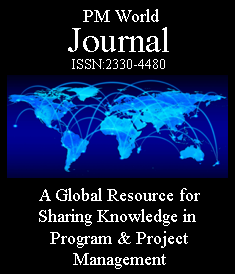A Global Resource for Sharing Knowledge in PPM
Privacy & Cookies: This site uses cookies. By continuing to use this website, you agree to their use.
To find out more, including how to control cookies, see here: Cookie Policy
To find out more, including how to control cookies, see here: Cookie Policy
Copyright © 2012–2025 PM World Inc. – All rights reserved · ISSN 2330-4480









The rules every project manager faces daily
COMMENTARY
By Henny Portman
The Netherlands
As a project manager, you’ve probably felt like you’re battling invisible forces at times. Take Murphy’s Law, for example: “Anything that can go wrong, will go wrong.” A straightforward deadline can suddenly turn into a minefield of unexpected obstacles, and just when you think you have everything under control, reality has other plans. Then there’s the student’s syndrome: “Work only starts in earnest when the deadline is near.” Whether it’s team members or suppliers, it often feels like action only kicks in when time is running out. Sound familiar?
These principles—sometimes frustrating, sometimes amusing—are far from random quirks. They represent the unwritten laws that shape the project management universe and test project managers daily. In this article, we’ll delve into several of these essential rules, from the anchoring effect, where stakeholders stubbornly cling to initial estimates despite contrary evidence, to the Zeigarnik effect, which reveals how unfinished tasks linger in our minds and impact productivity.
But don’t worry—these laws aren’t here to discourage you. On the contrary, by recognizing and understanding them, you can harness their insights to become a more effective and confident project manager.
Anchoring effect
The anchoring effect refers to the cognitive bias where people place too much weight on the first piece of information they receive, often using it as a reference point for all subsequent judgments. In project management, this bias can set unrealistic expectations for timelines, budgets, or deliverables when initial estimates are overly optimistic or based on incomplete data.
For example, a client tells project manager Lisa they expect a complex software project to be delivered in six weeks because a competitor claimed they could achieve similar results. Despite Lisa’s detailed analysis and data-backed schedule indicating a 12-week timeline, the client fixates on the six-week estimate, making every delay seem like a failure. As a result, the project team feels pressured to rush, compromising quality and creating unnecessary stress.
To counter the anchoring effect, Lisa should take control early by presenting clear, evidence-based estimates and explaining the rationale behind them. Regular updates throughout the project can help reframe stakeholder expectations and shift the focus from arbitrary anchors to achievable outcomes. Establishing trust and transparent communication are essential to overcoming this bias.
Boomerang principle
The boomerang principle states that actions taken to fix a problem often create new challenges, much like a boomerang returning unexpectedly. In project management, quick fixes or short-sighted decisions can lead to unintended consequences that undermine the original goal.
More…
To read entire article, click here
How to cite this work: Portman, H. (2025). The rules every project manager faces daily, commentary, PM World Journal, Vol. XIV, Issue I, January. Available online at https://pmworldlibrary.net/wp-content/uploads/2025/01/pmwj148-Jan2025-Portman-rules-every-project-manager-faces-daily.pdf
About the Author
Henny Portman
The Netherlands
Henny Portman, owner of Portman PM[O] Consultancy and was partner of HWP Consulting, has 40 years of experience in the project management domain. He was the project management office (PMO) thought leader within NN Group and responsible for the introduction and application of the PMO methodologies (portfolio, program, and project management) across Europe and Asia. He trains, coaches, and directs (senior) programme, project and portfolio managers and project sponsors at all levels, and has built several professional (PM(O)) communities. He was one of the top 5 World PMO Influencers 2023 (PMI/PMOGA).
Henny Portman is/was accredited in a variety of qualifications, including P3O, PRINCE2, MSP, MoP, PRINCE2 Agile, AgilePM, AgilePgM and AgileSHIFT trainer and an SPC4 SAFe consultant and trainer. He is/was a P3M3 trainer and assessor and PMO Value Ring Certified Consultant (PMI/PMO Global Alliance). On behalf of IPMA, he assessed mega and large projects for the IPMA Project Excellence Award. In addition to this, he is an international speaker, author of many articles and books in the PM(O) field (e.g. Agile Portfolio Management, Scaling Agile in organizations, Management of Portfolios, Programmes, and Projects, and Agile with a smile) and an active blogger (hennyportman.wordpress.com/).
Henny can be contacted at henny.portman@gmail.com.
Share this:
Like this:
Related